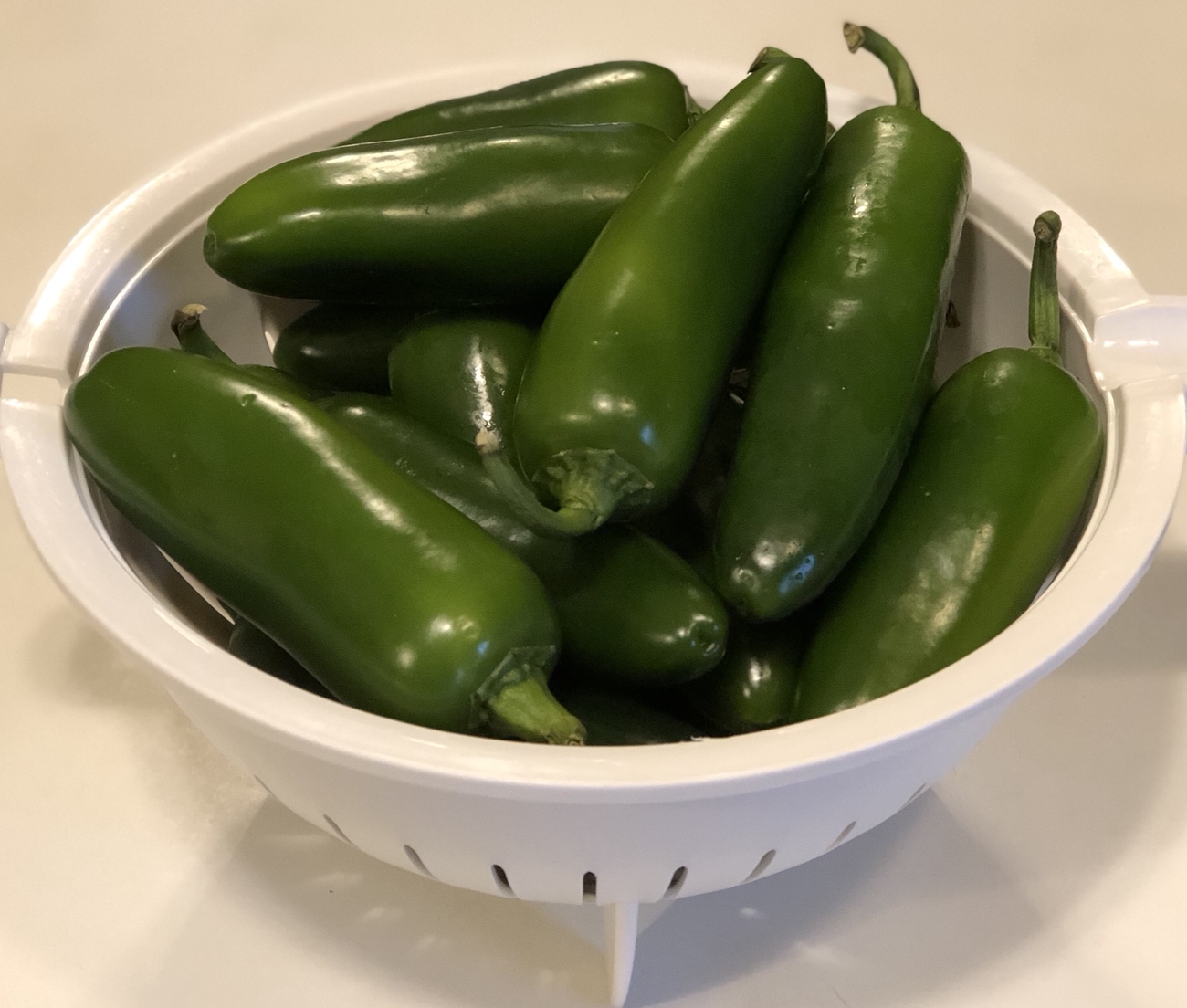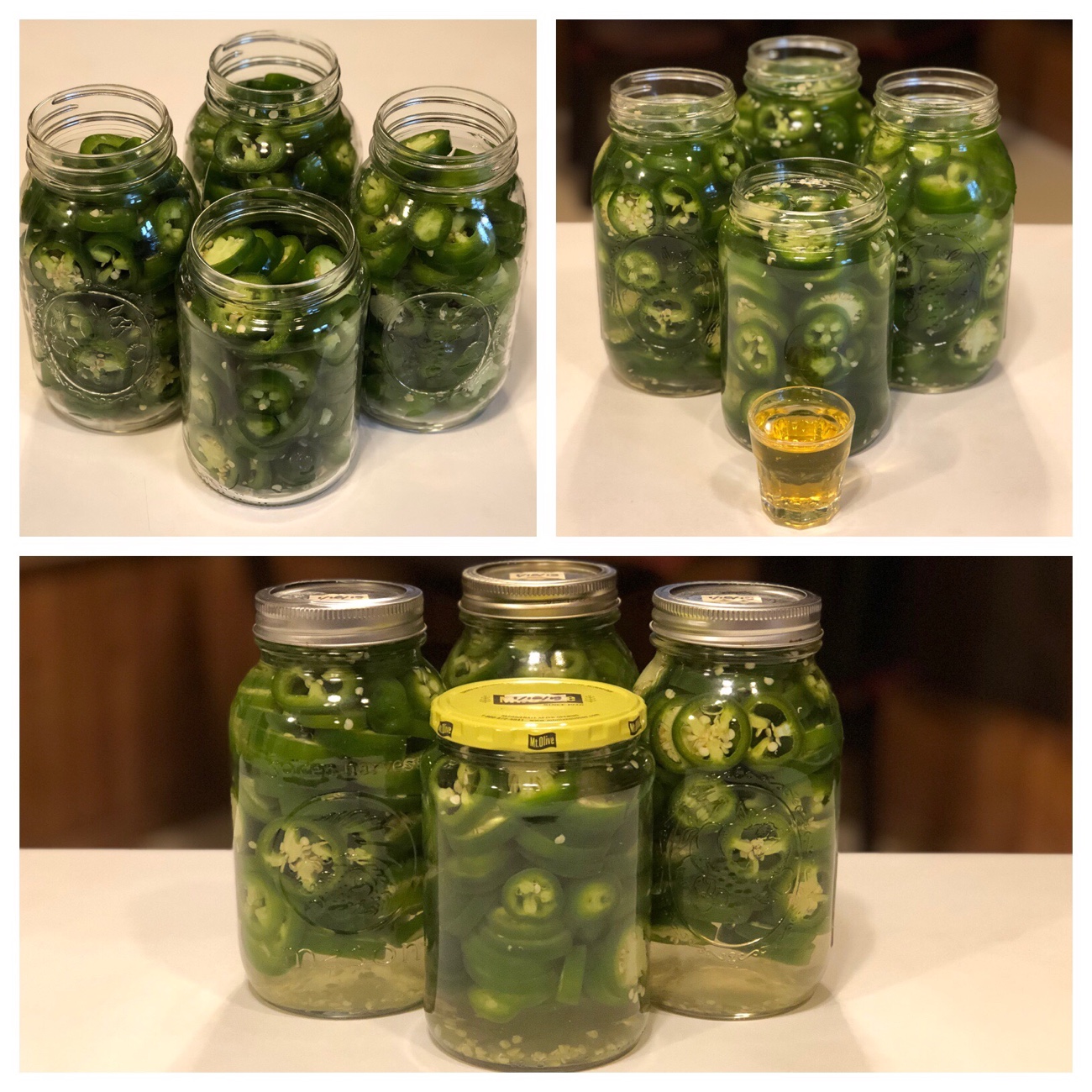
Earlier, we shared how we discovered that the pickled jalapeños we’d purchased were, to our chagrin, full of additives and preservatives. After disposing of them (and recycling the jars – would have kept them, had they been glass), we became acutely aware that we no longer had any of those delicious pops of spice that livened up dishes so well. What to do? Get some jalapeños and ferment them!
Getting our hands on enough fresh jalapeños to fill a couple of jars can be a tall order at this time of year. The one local (chain) grocery store didn’t merit consideration because the produce is not good. While we were at our favorite Asian grocery, we took a look at the pepper offerings, and while their produce was much better than the chain grocery store’s selection, I decided to pass on the jalapeños because I thought of another place where the jalapeños might be even nicer.
Where? The supermercado in the strip mall, of course. And I wasn’t disappointed. The jalapeños were big, unblemished, and bursting with freshness. They weren’t organic, but I knew that I wasn’t going to be getting organic jalapeños anywhere in the vicinity. A woman shopping with her child looked as us curiously as we filled a bag with the peppers, no doubt wondering what in the world we were going to do with all of them. Ferment!

I would be remiss if I didn’t also mention that the other (conventional) produce there – like big carrots, cilantro, and tomatillos – was fresh and beautiful.The reason seems simple: in stores where customers buy and eat produce on a regular basis, where it’s a core part of their customers’ diets, it’s expected to look and taste good. Unlike that chain grocery store I mentioned, you won’t find moldy strawberries or sadly wilted heads of cabbage at these independent (the supermercado has several locations in the state) stores.
To make fermented jalapeños, I use a very simple – and nearly foolproof, I think – recipe from Cultures for Health. Basically, you slice them, fill jars, add brine and top up with a bit of kombucha (I use kombucha vinegar). After daily burping of the jars for about 3 weeks, the peppers should be ready to be moved into the fridge and enjoyed. They’re toothsome and additive-free – truly the pièce de résistance of a nachos tower or burrito bowl. I also like to add some to spaghetti sauce and chili for a subtle zing.

It’s going to be hard to wait for 3 weeks until the peppers are properly pickled, but it’ll be worth the wait. These fermented peppers will be full of probiotic goodness and nothing else – and I’ll have saved money making my own, to boot. Win-win!

Comments are closed.